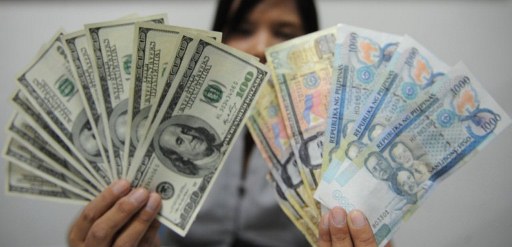
AFP FILE PHOTO
The peso dropped anew to its lowest level in almost 13 years as investors fled to dollar assets, spooked by the country’s record high inflation for August and aggravated by a broad emerging markets selldown around the world.
From the previous day’s close of P53.55, the local currency ended Thursday’s trading session at P53.80 — its lowest level since December 2005. This was also the steepest single day drop for the peso since June 13, 2008.
The peso was also the biggest loser in the region Thursday, amid weaker currencies across the board.
BDO Unibank chief strategist Jonathan Ravelas said the currency’s weakness “stems from a series of unfortunate events such as importers’ demand for the US currency, rising inflation, and fears of contagion from an emerging market rout.”
“Ladies and gentlemen, the captain has turned on the fasten seat belt sign. We are now crossing a zone of turbulence. Please return your seats and keep your seat belts fastened. Thank you,” he said, mimicking the warning message of airline pilots to passengers when flying through rough skies.
A total of $911.5 million changed hands on the foreign exchange trading platform of the Bankers Association of the Philippines, with most local banks selling their pesos and the central bank seen intervening to modulate the volatility.
“There could still be some weakness,” BDO’s Ravelas noted, adding that market technicals point to P54 as the next resistance.
“We continue to monitor developments overseas, particularly the Latin American economies as a major source of contagion and the statements from the BSP,” he said.
He held out hope that the peso would strengthen back to P53.50 or even P53 once dollar remittances from overseas workers come in ahead of the Christmas season. /kga